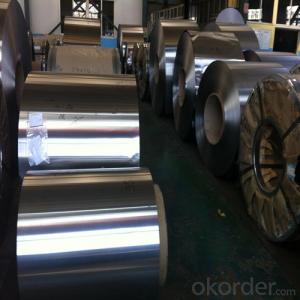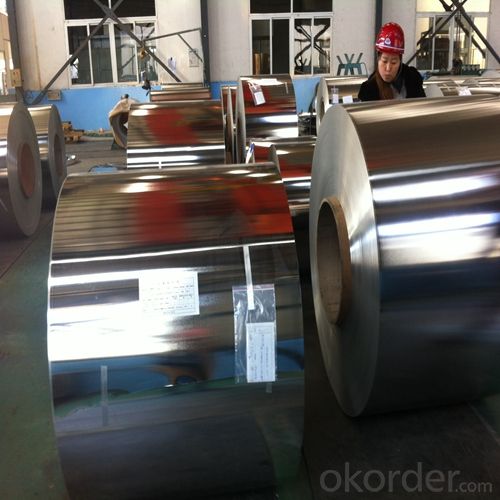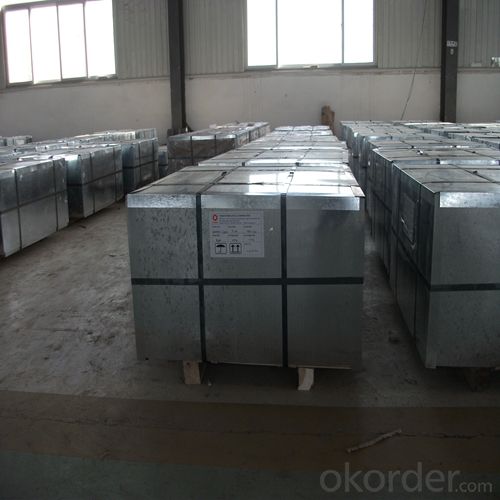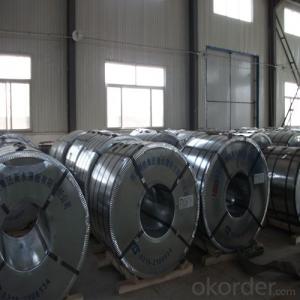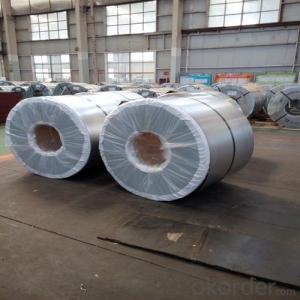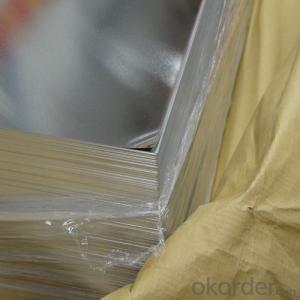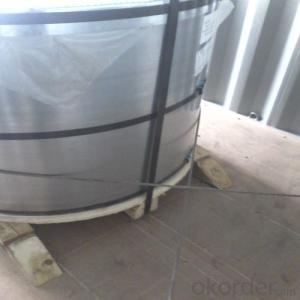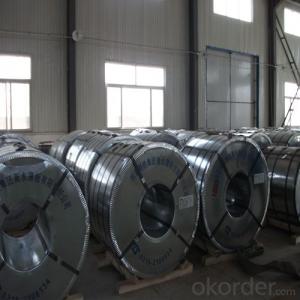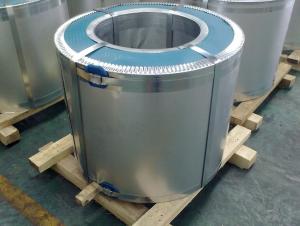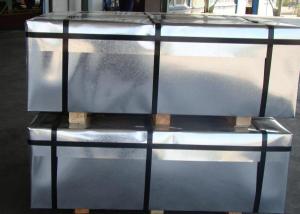Electrolytic Tinplate of High Quality for Metal Container 0.23mm
- Loading Port:
- Shanghai
- Payment Terms:
- TT OR LC
- Min Order Qty:
- 25 m.t.
- Supply Capability:
- 15000 m.t./month
OKorder Service Pledge
OKorder Financial Service
You Might Also Like
1.Structure of Electrolytic Tinplate of High Quality for Metal Container 0.23mm Description
Electrolytic Tinplate is a thin steel sheet coated by tin. It has an extremely beautiful metallic luster as well as excellent properties in corrosion resistance, solder ability, and weld ability.
2.Main Features of the Electrolytic Tinplate of High Quality for Metal Container 0.23mm
Electrolytic Tinplate undoubtedly enjoys the pride of place as a packaging medium especially for food. It owes its unique position to its "nine layer sandwich structure", each of which contributes to its eminence as a packing material. The steel base of electrolytic tinplate provides the necessary strength and formability for can fabrication. The tin-iron alloy layer provides the bond between the steel and free tin layer. The free tin layer is not only responsible for the attractive bright finish and ease of solderability but is also non-toxic- a factor of vital importance in food packaging!
Tinplate is also widely used for making all types of containers such as food cans, beverage cans, and artistic cans, tea cans, painting cans, chemical package cans and dry food package cans, metal printing etc. Its applications are not limited to containers; recently, electrolytic tinplate has also been used for making electrical machinery parts and many other products.
3.Electrolytic Tinplate of High Quality for Metal Container 0.23mm Images


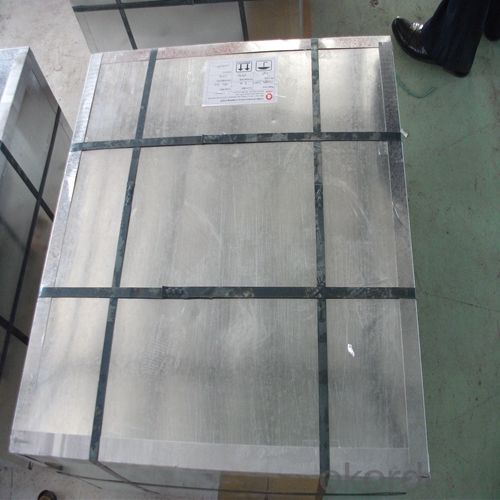
4.Electrolytic Tinplate of High Quality for Metal Container 0.23mm Specification
Standard:BS EN 10202
Material: SPCC
Thickness:0.23mm
Width:732mm
Temper: T4
Annealing: CA
Coil Inner Diameter: 508mm
Weight: 6-10 tons/coil
Passivation:311
Oil: DOS
Surface: silver
5.FAQ of Electrolytic Tinplate of High Quality for Metal Container 0.23mm:
1. What is the delivery time for your prime quality tinplate?
Usually 35 days after order confirmation.
2. What is your Minimum Order Quantity?
Usually MOQ is 50tons for one single size, for trial order, it can be 25 tons.
3. What is the payment term?
The most common we use is L/C at sight or TT. We can also try use other terms.
- Q: What are the challenges in manufacturing tinplate?
- One of the main challenges in manufacturing tinplate is the complexity of the production process. It involves several steps such as shaping, coating, and annealing, which require precise control and coordination. Additionally, maintaining the quality of the tin coating can be challenging as it needs to adhere uniformly to the steel substrate without any defects. Furthermore, ensuring the tinplate's durability and resistance to corrosion is crucial, requiring continuous monitoring and testing. Overall, managing the intricate manufacturing process, achieving consistent quality, and meeting customer demands pose significant challenges in tinplate production.
- Q: What are the main properties of tinplate?
- Tinplate is primarily known for its corrosion resistance, durability, and versatility. It is a thin steel sheet coated with a layer of tin, which provides a protective barrier against rust and oxidation. This makes tinplate suitable for packaging various food and beverage products. Additionally, its malleability allows for easy shaping and forming, making it ideal for intricate designs and embossing. Tinplate also exhibits excellent solderability, making it a preferred material for manufacturing cans, containers, and other metal products.
- Q: How does tinplate handle exposure to light?
- Tinplate handles exposure to light quite well. Due to its metallic properties, tinplate is not affected by light in terms of discoloration or degradation. It does not absorb light and is not prone to fading or yellowing. Therefore, tinplate can maintain its appearance and integrity even when exposed to light for extended periods.
- Q: Can tinplate be used for packaging of hazardous materials?
- Yes, tinplate can be used for packaging of hazardous materials. Tinplate is known for its high corrosion resistance, durability, and ability to withstand extreme temperatures. These properties make it suitable for packaging materials that may pose a risk to human health or the environment. Additionally, tinplate can be coated or lined with appropriate materials to provide an extra layer of protection and prevent any leakage or interaction between the hazardous material and the packaging.
- Q: What are the main considerations for choosing tinplate suppliers?
- The main considerations for choosing tinplate suppliers include the quality of their products, their pricing and pricing structure, their production capacity and lead times, their ability to meet specific requirements and customizations, their reputation and reliability, their customer service and support, and their sustainability and ethical practices.
- Q: What are the different types of tinplate finishes available?
- There are primarily three types of tinplate finishes available: bright, stone, and matte. Bright tinplate has a shiny and reflective surface, stone tinplate has a textured and grainy appearance, and matte tinplate has a smooth and non-reflective finish. These different finishes offer various aesthetic options for packaging and can be chosen based on the desired look and feel of the final product.
- Q: Tin plated tin plated?
- Can electroplate.If the parts need tin plating, it is better not to use tinplate (tin plated steel / strip), galvanized steel plate / ordinary steel plate / strip with or without plating.
- Q: What are the different ways to seal tinplate cans?
- There are several different ways to seal tinplate cans. Some common methods include double seam sealing, soldering, welding, and adhesive bonding. Each method has its own advantages and suitability based on factors like the type of product being stored, the desired level of sealing integrity, and the production process.
- Q: Can tinplate be used for shipping containers?
- Yes, tinplate can be used for shipping containers. Tinplate is a type of steel coated with a thin layer of tin, which provides corrosion resistance and durability. This makes it suitable for shipping containers as it helps protect the container from rust and external damage during transportation and storage.
- Q: How does tinplate perform in terms of heat transfer?
- Tinplate performs poorly in terms of heat transfer compared to other materials.
Send your message to us
Electrolytic Tinplate of High Quality for Metal Container 0.23mm
- Loading Port:
- Shanghai
- Payment Terms:
- TT OR LC
- Min Order Qty:
- 25 m.t.
- Supply Capability:
- 15000 m.t./month
OKorder Service Pledge
OKorder Financial Service
Similar products
Hot products
Hot Searches
Related keywords
